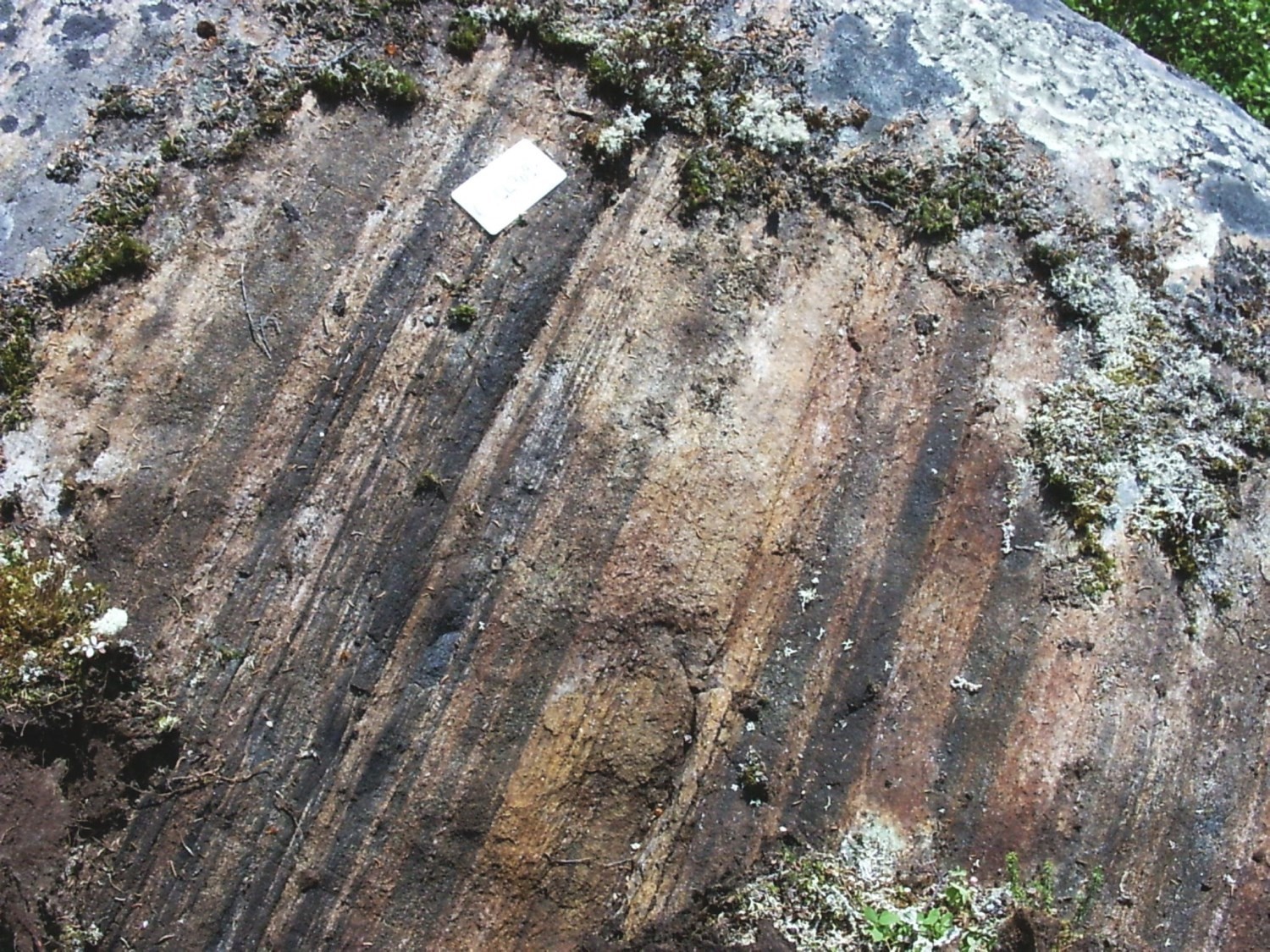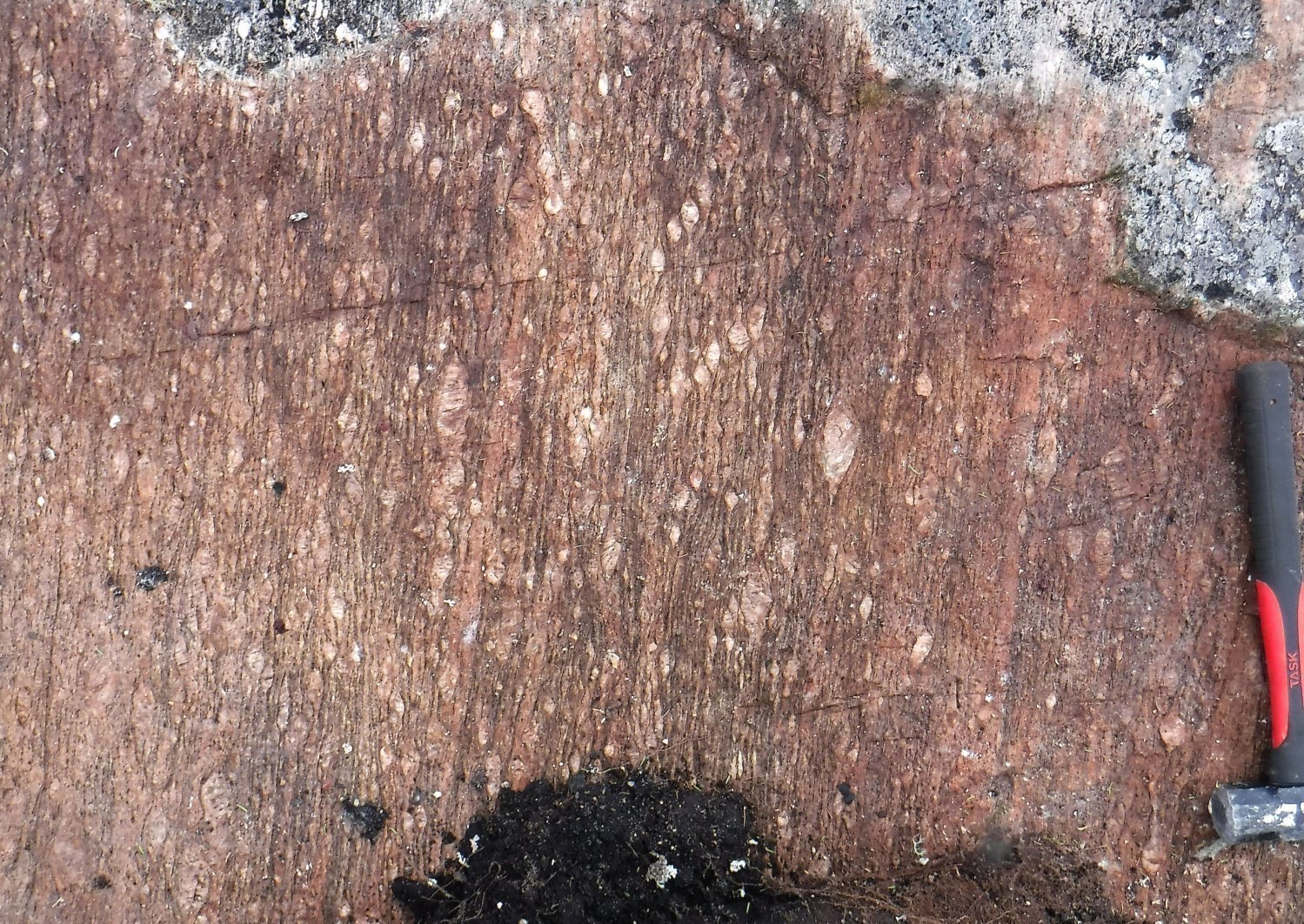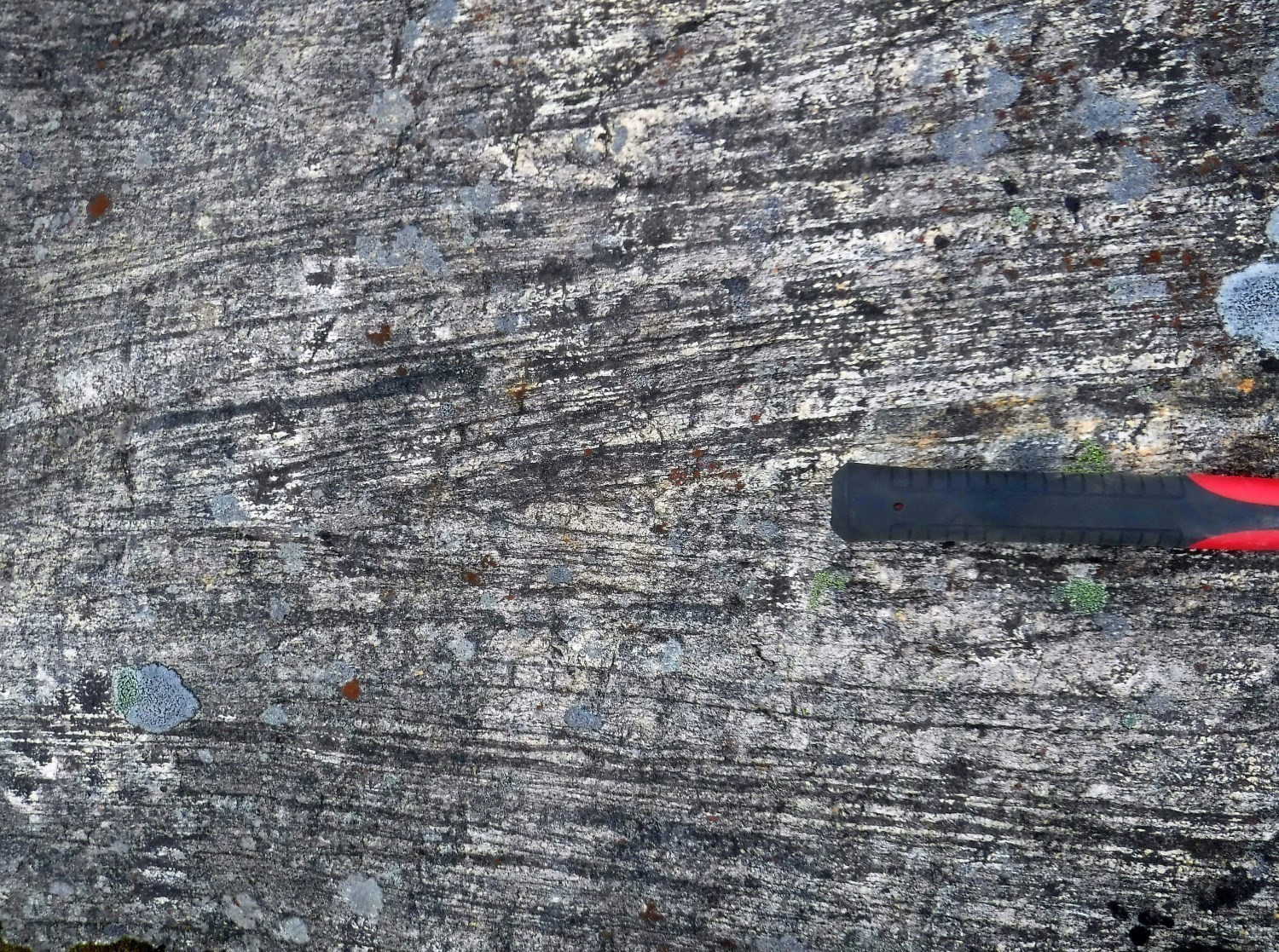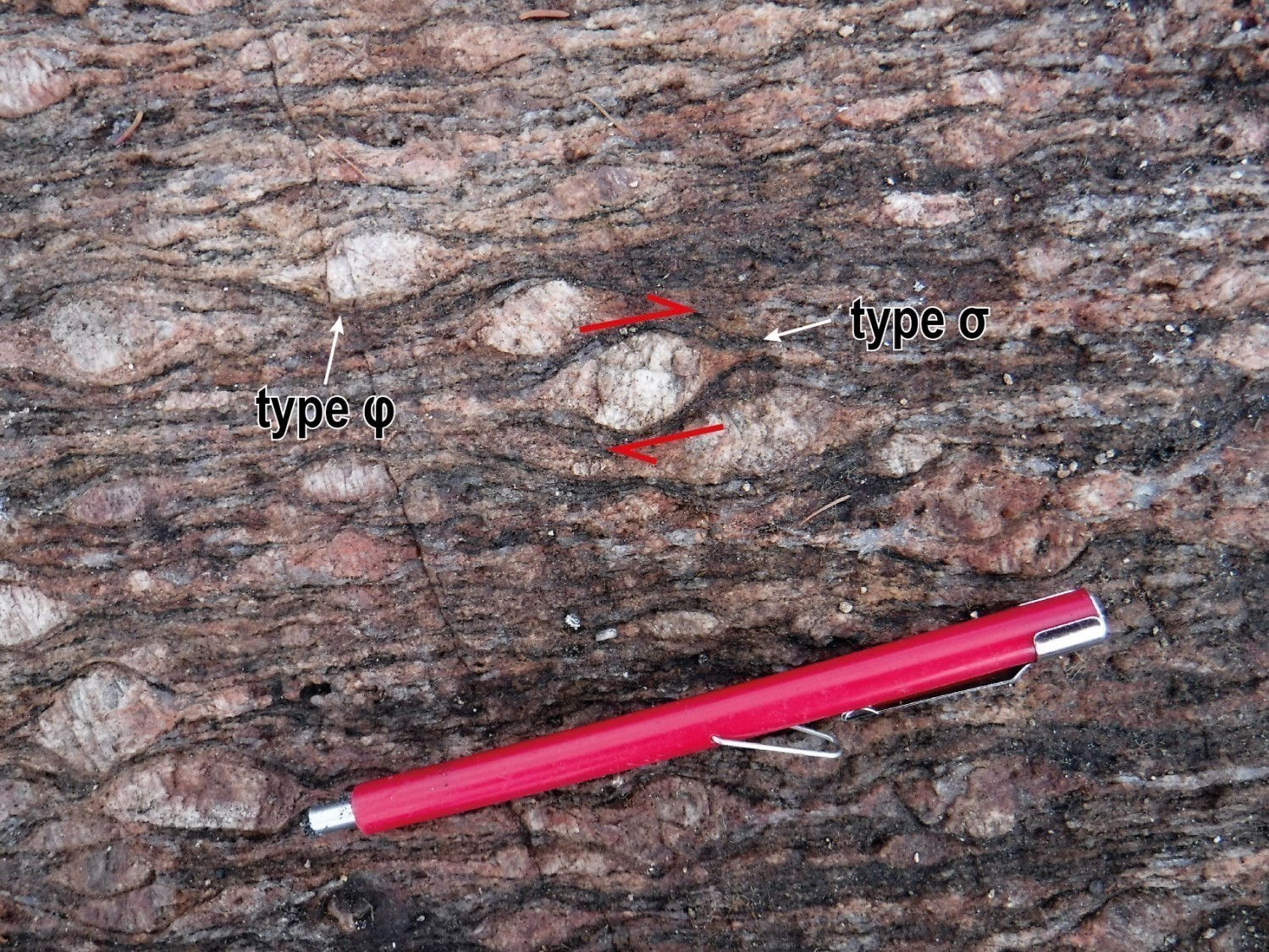| Author(s) | Van der Leeden et al., 1986 |
| Methodology | Defined from a geological survey and geophysical data |
| Belonging | Churchill Province / George and Baleine lithotectonic domains |
| Main movement | Dextral |
| Deformation style | Shearing |
| Metamorphic facies (mean facies related to main deformation) | Amphibolites |
Background and Methodology
The Lac Tudor Shear Zone (ZCtud) was first described by van der Leeden (1986) in the Southeastern Churchill Province (SECP) and recognized as a lithotectonic domain called “Lac Tudor Shear Zone Domain” (van der Leeden et al., 1990). These authors then considered that this zone also included the Champdoré Shear Zone, located directly to the west, which was later separated by Hammouche et al. (2011). Based on field checks conducted in the summer of 2016, Charette et al. (2018) consider the Champdoré Shear Zone to be a distinct structural domain in which deformation is not pronounced compared to other SECP ß shear zones (see “Structural Geology” section of Charette et al., 2018).
Generally, the ZCtud is considered to represent the western boundary of the De Pas Supersuite in the southern SECP (Martelain, 1986; van der Leeden et al., 1990; James et al., 1996; James and Dunning, 2000). Some authors note that it delineates the Crossroads and McKenzie River domains (James et al., 1996; James and Dunning, 2000; Kerr et al., 1994; Hammouche et al., 2011). Lafrance et al. (2014) report that the Marralik Shear Zone, located in the Saffray Lake area (NTS sheet 24G) appears to be the northern extension of the ZCtud. Others suggest that it is N-S oriented in the southern part of the SEPC as it gradually curves towards the NNW-SSE to NW-SE in the northern portion, where it joins the Lac Turcotte Fault (Wardle et al., 2002; Corrigan et al., 2018). However, as part of the SECP synthesis (Lafrance et al., 2018), it was not possible to extend the ZCtud northward in any certainty.
Boundaries and Morphology
| Width | 235 km |
| Length | 5 km to 15 km |
| Orientation | N-S to NNW-SSE |
In its southern portion, the ZCtud forms an N-S oriented regional structure; it gradually curves towards the NNW-SSE in the north. It is well defined in the southern part of the SECP, where it delineates the George Lithotectonic Domain to the east, from the Baleine Lithotectonic Domain to the west. Locally deformed zones were observed in the northern extension, but deformation is generally weak and diffuse. In addition, late-tectonic intrusions obscure the contact between the George and Baleine domains, where deformation could be located. Thus, geophysical surveys and fieldwork do not allow the ZCtud to be extended beyond sheet 24B16.
Stratigraphic Units Concerned
In the southern SECP, the ZCtud affects units located on the western edge of the George Lithotectonic Domain, as well as those located on the eastern edge of the Baleine Lithotectonic Domain. In the George Domain, De Pas Supersuite rocks are commonly mylonitized, but some De Pas potassic intrusions are also later. In the eastern margin of the Baleine Domain, the following units are affected by the ZCtud: False and Winnie suites, and Knox, Flat Point, Qurlutuq and Ungava complexes.
Structural Characteristics
❯ Main Fabrics
| Main Fabric | Type of Fabric | Direction (°) | Dip / Plunge (°) | Number of measurements | Comments |
| Foliation Sn – Northen ZCtud | Foliation, gneissosity, mylonitic foliation or banding | 320 | 74 | 95 | |
| Linéation Ln – Northern ZCtud | Lineation | – | – | 5 | Insufficient number of measurements to estimate general direction |
| Foliation Sn – Southern ZCtud | Foliation | 350 | 77 | 183 | |
| Linéation Ln – Southern ZCtud | Lineation | 355 | 25 | 16 |
The ZCtud is characterized by the reorientation and straightening of foliations, the thinning of lithological units, and the presence of mylonites and upright gneiss bands. Deformed rocks have a mylonitic or subvertical planar fabric and contain a subhorizontal stretch lineation. However, insufficient lineation measurements are available. Sanborn-Barrie (2016) also reports lineations with steeper plunges. The lineation is often sparsely developed compared to the planar fabric and generally corresponds to S>L tectonites. On several outcrops, tectonic banding (upright gneiss) occurs as millimetric to centimetric alternating bands, either quartz, quartzofeldspathic or mafic. In K-feldspar porphyritic units of the De Pas Supersuite, these bands are deformed, realigned, stretched and crushed to form porphyroclasts. Some mylonite bands are cut by pink granite intrusions that are themselves mylonitized and folded in places.
❯ Other Fabrics
Does not apply.
❯ Folds
Tight isoclinal folds and intrafolial folds are commonly observed.
❯ Regional Faults
Not observed.
❯ Cross-Cutting Relationships
Not observed.
❯ Kinematics
According to van der Leeden et al. (1990), kinematic indicators are complex, but there is evidence of a predominantly dextral component, as well as contraction involving overthrusting of rocks located in the east over those in the west. In thin section, Vanier et al. (2018) observed fish-scale feldspar inclusions in quartz, also indicating dextral shearing.
Deformation Style
The ZCtud is a heterogeneous mylonite zone displaying dextral lateral movement with a westward thrust component (van der Leeden et al., 1990). The dominant deformation style corresponds to a network of straight-lined and highly parallelized shears. The dominant fabric is flattening. The ZCtud is interpreted as a transpressive shear zone synchronous with upper amphibolite metamorphic facies (van der Leeden et al., 1990; James and Dunning, 2000). Some authors define it as the boundary between detached crustal segments of the Superior Province and exotic Archean blocs of the SECP (Girard, 1990; James and Dunning, 2000; Wardle et al., 2002).
Metamorphic Characteristics
The presence of pre-kinematic, syn-kinematic, and post-kinematic leucosomes in the shear system has led to the conclusion that the strike-slip deformation is synchronous to partial melting (Charette et al., 2016). This conclusion implies that the dextral strike-slip movement, associated with convergence affecting the SECP, occurred while the SECP itself underwent thickening and partial melting.
Thin section observations of Vanier et al. (2018) highlight the widespread presence of chessboard extinction involving a deformation temperature >650°C (Mainprice et al., 1986). In fact, feldspars are even grained and granoblastic or form porphyroclasts whose mantle is recrystallized, suggesting feldspar recrystallization by subgrain rotation. Analysis of quartz c-axes indicates a deformation temperature between 600°C and 700°C (Vanier et al., 2018).
Alterations
Not observed.
Geophysical Characteristics
The ZCtud is marked by strong straight-lined and parallelized magnetic lineaments.
Chronological Markers
The ZCtud affects rocks of the De Pas Supersuite. However, some intrusions assigned to De Pas are not deformed and cut the mylonitic fabric. The minimum age of this unit (1805 Ma) therefore allows shearing to be constrained to an earlier period. A Labrador dating in the ZCtud extension also indicates a minimum age of 1802 +9/-14 Ma (James and Dunning, 2000) for the deformation.
References
Publications available through Sigéom Examine
Charette, B., Lafrance, I., Vanier, M.-A., 2018. Domaine de George, Sud-est de la Province de Churchill, Nunavik, Québec, Canada : synthèse de la géologie. MERN. BG 2018-11
HAMMOUCHE, H., LEGOUIX, C., GOUTIER, J., DION, C., PETRELLA, L. 2011. GEOLOGIE DE LA REGION DU LAC BONAVENTURE. MRNF. RG 2011-03, 37 pages and 1 plan.
LAFRANCE, I., SIMARD, M., BANDYAYERA, D. 2014. GEOLOGIE DE LA REGION DU LAC SAFFRAY (SNRC 24F, 24G). MRN. RG 2014-02, 51 pages and 1 plan.
Lafrance, I., Charette, B., Vanier, M.A., 2018. Sud-est de la Province de Churchill, Nunavik, Québec, Canada : synthèse de la géologie. MERN. Bulletin GéologiQUE
MARTELAIN, J. 1986. RAPPORT D’ACTIVITE 1986 – DIRECTION DE LA RECHERCHE GEOLOGIQUE. M E R. DV 86-14, 93 pages.
VAN DER LEEDEN, J. 1986. GEOLOGIE DE LA REGION DU LAC MISTINIBI – NOUVEAU-QUEBEC. MRN. DP-86-12, 2 plans.
VANIER, M A., GODET, A., GUILMETTE, C., HARRIS, L B., CLEVEN, N R., CHARETTE, B., LAFRANCE, I. 2018. Extrusion latérale en croûte moyenne dans le sud-est de la Province de Churchill démontrée par les interprétations géophysiques, l’analyse structurale et les pétrofabriques du quartz. UNIVERSITE LAVAL, INRS, MERN. MB 2018-12, 58 pages.
VANIER, M A., GUILMETTE, C., HARRIS, L., GODET, A., CLEVEN, N., CHARETTE, B., LAFRANCE, I. 2017. ANALYSE STRUCTURALE ET MICROSTRUCTURES DES ZONES DE CISAILLEMENT DE LA RIVIERE GEORGE ET DU LAC TUDOR. UNIVERSITE LAVAL, INRS, MERN. MB 2017-12, 50 pages.
Other publications
CORRIGAN, D., WODICKA, N., McFARLANE, C., LAFRANCE, I., VAN ROOYEN, D., BANDYAYERA, D., BILODEAU, C. 2018. Lithotectonic framework of the Core Zone, Southeastern Churchill Province. Geoscience; volume 45, pages 1-24. doi.org/10.12789/geocanj.2018.45.128
GIRARD, R. 1990. Les cisaillements latéraux dans l’arrière-pays des orogènes du Nouveau-Québec et de Torngat : une revue. Geoscience Canada; volume 17, pages 301-304.
JAMES, D.T., DUNNING, G.R. 2000. U-Pb geochronological constraints for Paleoproterozoic evolution of the Core Zone, southeastern Churchill Province, northeastern Laurentia. Precambrian Research; volume 103, pages 31-54. dx.doi.org/10.1016/S0301-9268(00)00074-7
JAMES, D.T., CONNELLY, J.N., WASTENEYS, H.A., KILFOIL, G.J. 1996. Paleoproterozoic lithotectonic divisions of the southeastern Churchill Province, western Labrador. Canadian Journal of Earth Sciences; volume 33, pages 216-230. dx.doi.org/10.1139/e96-019
KERR, A., JAMES, D.T., FRYER, B.J. 1994. Nd isotopic geochemical studies in the Labrador shield: a progress report and preliminary data from the Churchill (Rae) Province. Geological Survey of Newfoundland and Labrador, Department of Natural Resources, pages 51-61.
Sandborn-Barrie, M. 2016. Refining lithological and structural understanding of the southern Core Zone, northern Quebec and Labrador in support of mineral resource assessment. Geological Survey of Canada, Open file 7965, 39 pages.
VAN DER LEEDEN, J., BELANGER, M., DANIS, D., GIRARD, R., MARTELAIN, J. 1990. Lithotectonic domains in the high-grade terrain east of the Labrador Trough (Quebec). In The Early Proterozoic Trans-Hudson Orogen (J.F. Lewry and M.R. Stauffer, editors). Geological Association of Canada; Special Paper 37, pages 371-386.
WARDLE, R.J., JAMES, D.T, SCOTT, D.J., HALL, J. 2002. The southeastern Churchill Province: synthesis of a Paleoproterozoic transpressional orogen. Canadian Journal of Earth Science; volume 39, pages 639-663.







